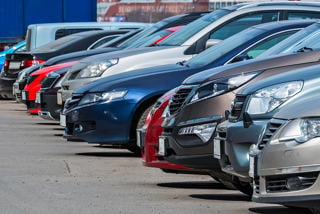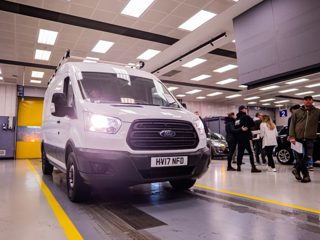Robert Redman, forecast editor at Glass's
A degree of stability seems to be returning to the UK used car auction market.
Whilst the key measures of first time conversion rate, percentage of original cost new, and sales volume index all dipped slightly in August, they all recovered in September and continue to exceed the figures achieved in the same month last year.
Of course, with all the ongoing uncertainty in the world, it is too early to state that we are back to normal, but it is encouraging to see that despite all the challenges the auction market is still performing well.


The rapid post-lockdown recovery was - at least in part - driven by a need to re-stock sites and feed pent up retail demand.
Virtually every car offered received multiple bids and anything desirable was selling for very strong money.
This slowed, and feedback from the market suggests that buyers are becoming a little more selective in what they buy.
Desirable retail stock is still selling well at auction, moving quickly and for good money, but the less desirable stock is starting to become harder work.
Cars with damage or less appealing specification can struggle to even get a bid, and those that do sell are not achieving the sort of money they would have two to three months ago.
In terms of what is popular, SUVs continue to sell well.
Convertible hammer prices are weakening, no doubt due to the change in season, although they are still selling.
Despite all the media hype and their apparent popularity in the new market, alternatively fuelled cars continue to challenge vendors in auction channels.
This could be because the latest generation vehicles have much longer ranges and quicker charging times than those typically found in the used market, making them appear less desirable and thus perhaps worth less than the vendors may be hoping…
Also, the restrictions around leisure activities have meant reduced demand for taxis and minicabs, which have become biased more towards low emission cars in recent years.
Used retail market
The used retail market is also showing signs of stabilising, with the number of sales observations and the average sale price for September being very similar to those in August.
The number of observations is still lower than for the same month last year, down just over 10%, but the average sale price is 5.8% higher, even though the average age of the cars sold was 47.5 months, almost 20% higher than the 39.8 months reported for September 2019.

 Glass’s live retail pricing tool GlassNet Radar also shows that the average time a car spends on the forecourt continues to decrease.
Glass’s live retail pricing tool GlassNet Radar also shows that the average time a car spends on the forecourt continues to decrease.
At 37.7 days it is 8.1% lower than the 41.0 days reported for the same month last year, and a notable 17% improvement over August’s 45.5 days.
This is a good indication that there continues to be a healthy retail demand for used cars.

Outlook
Taken at face value, the metrics for both the wholesale and retail markets suggest that October will be another promising month.
However, we continue to live in uncertain times and the recent lockdown announcements may likely slow down the recovery, especially in those regions that are seeing more stringent conditions.
More transactions are now carried out remotely though, not just for the wholesale market but also for retail, and this may lessen that impact.
We are also heading into the final few months of the year which traditionally means a slowing down of the market, especially if we have “proper” winter weather.
So, as we head into the final quarter of what has been an extraordinary year the only thing we can be certain of is that the used car markets – both wholesale and retail – are as unpredictable as they have been for most of this year.
Of course, Glass’s editorial team will continue to monitor activity and share what they find.



















Login to comment
Comments
No comments have been made yet.